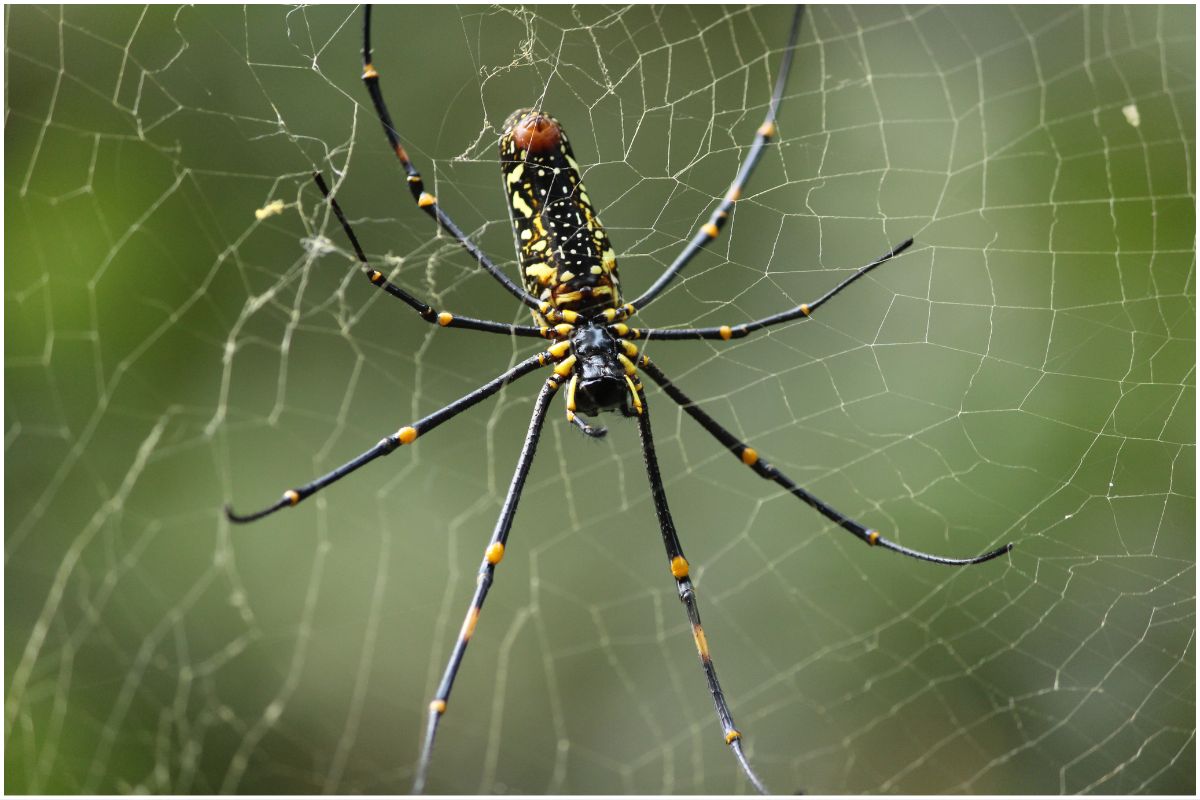Situated in a tropical country, Bali is home to thousands of arachnid species, including spiders. Most spiders in Bali can appear intimidating to travelers, especially those not accustomed to tropical climates.

However, Bali spider infestation is not that scary because the majority of them are harmless, and you might spot them in your garden, rice fields, forest, or even in your villa in Bali. Here are 7 common species of Bali spiders that you might encounter during your visit.
1. Black Golden Orbweaver
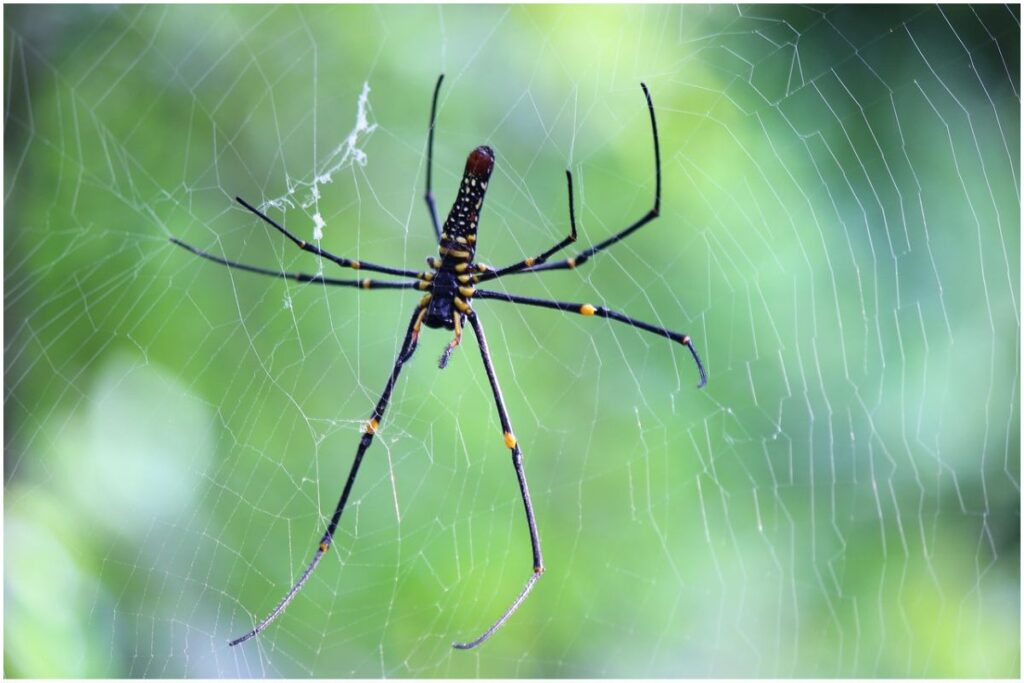
One of the most common Bali spiders is the Black Golden Orbweaver, often found in forested areas, gardens, or between trees or private pool around hotel. It’s known for its large, intricate web that glows gold in the sunlight.
These crawlers may look intimidating due to their size and bright colors, but they are not dangerous to humans. Their webs can span over a meter, yet they rarely move unless disturbed. Many travelers are surprised by how peaceful these eight-legged creatures are.
2. Common House Spider
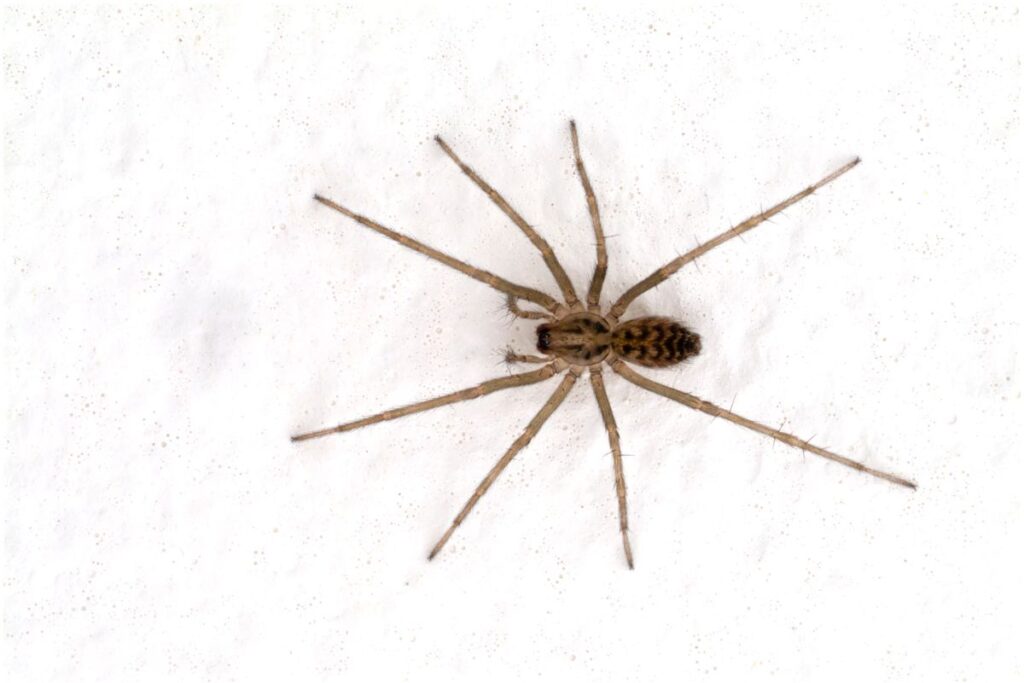
The Common House is one of the most typical spiders in Bali, especially in urban or semi-urban areas. As the name suggests, they are usually found inside homes, hotels, or villas in Seminyak and Canggu.
These small crawlers tend to hide in corners, under furniture, or in bathrooms with messy and irregular webs, unlike the symmetrical webs of outdoor species. While they might not be pleasant to see, they pose no threat and help reduce the population of flies and mosquitoes.
3. Giant Golden Orbweaver
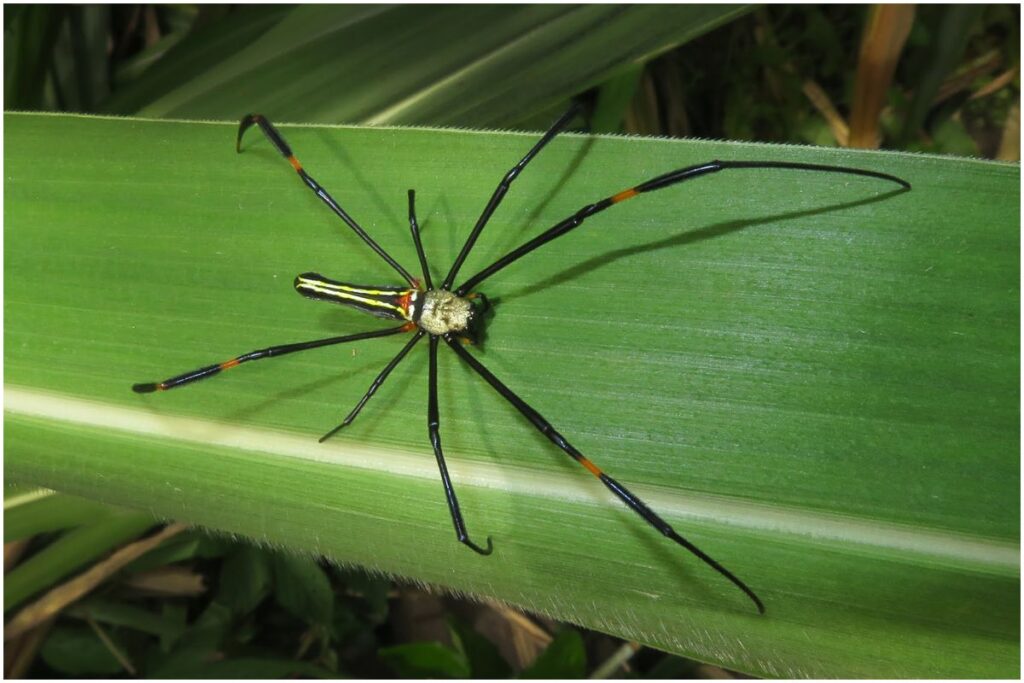
Closely related to the Black Golden Orbweaver, this species is larger and more striking in appearance. Commonly seen near rice terraces, tropical gardens, and forest paths, their legs can span up to 15 cm.
Despite their size, their bite is not harmful to humans. They feed on insects like grasshoppers and moths, playing an important role in the local ecosystem. Some of the honeymoon villa that have lush greenery surroundings are their common habitat.
Interestingly, in some areas of Bali, this web weavers is believed to cure bedwetting in children if consumed, though this is more myth than medicine.
4. Jumping Spider
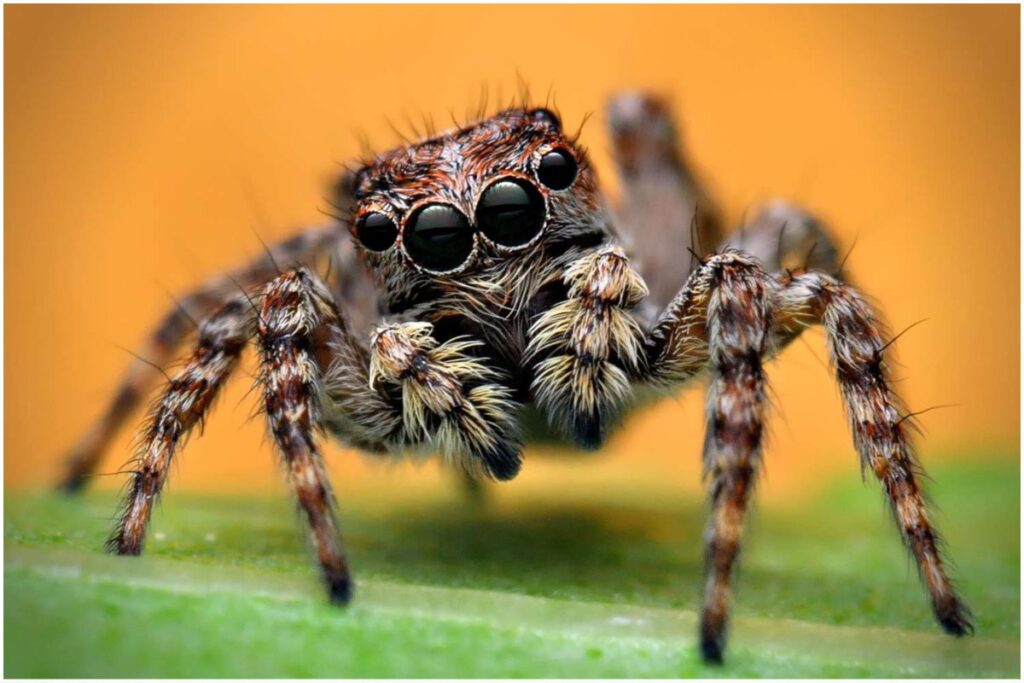
Unlike most spiders in Bali, these crawlers don’t build webs to catch prey. Instead, they stalk and pounce like tiny cats. These crawlers are quick, curious, and often jump around to explore their surroundings.
They’re completely harmless and rarely bite. Their cartoon-like eyes make them a favorite among macro photographers. You might spot one near windows, on walls, or in garden plants. Small but agile, they’re more charming than scary.
5. Pantropical Huntsman Spider
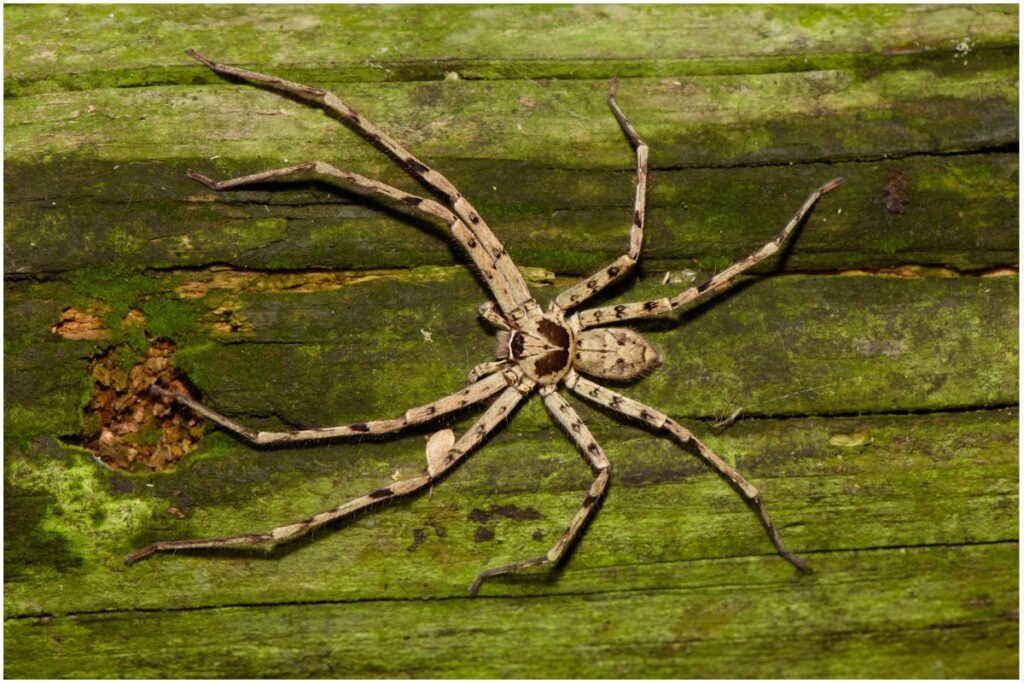
The Pantropical Huntsman is the infamous large Bali spider that often startles visitors. With this huntsman’s leg span that can reach up to 30 cm, it’s one of the biggest spiders in Indonesia, especially in this tropical island.
Despite their frightening appearance, they are not dangerous. These crawlers don’t spin webs but prefer to hide behind curtains, under furniture, or on ceilings.
They’re nocturnal and help control cockroach populations, making them surprisingly useful guests in many houses, villas, or even hotels.
6. Grass Cross Spider
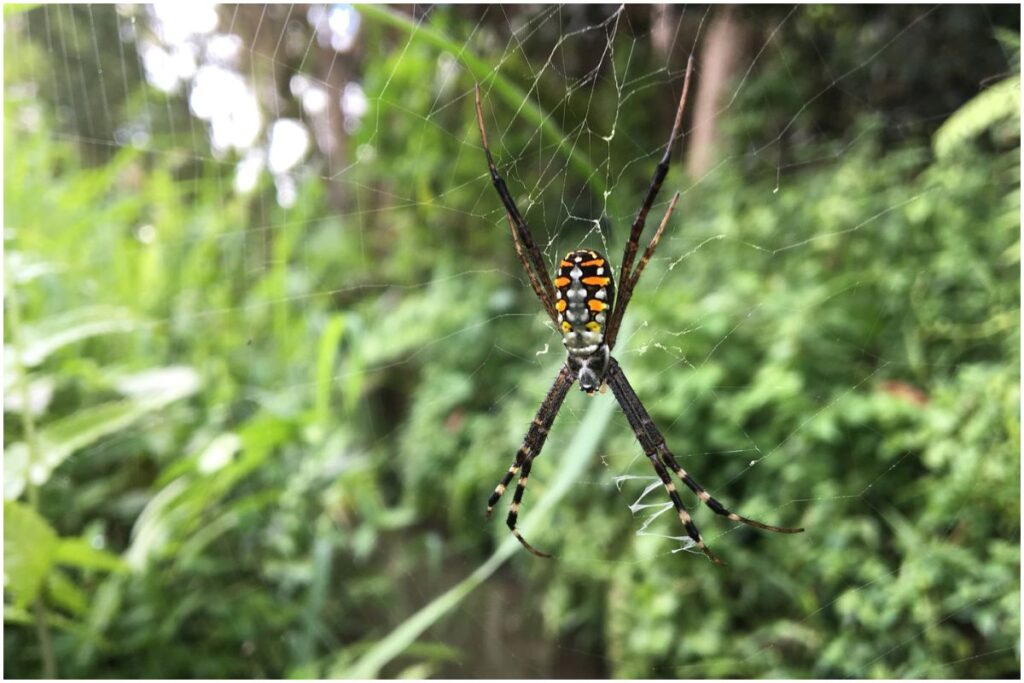
The Grass Cross is common in open fields, rice paddies, or along jungle trails. It’s named for the X-shaped position it holds while sitting in its web, typically hidden among tall grass.
These web weavers are tiny, colorful, and not aggressive. They feed only on flying insects and are most active in the early mornings.
Their small webs may be hard to spot, but they’re delicate works of art when viewed up close. These web weavers can double their population during wet season because the island grows more grass and wild plants, which are their favorite habitat.
7. Hawaiian Garden Spider
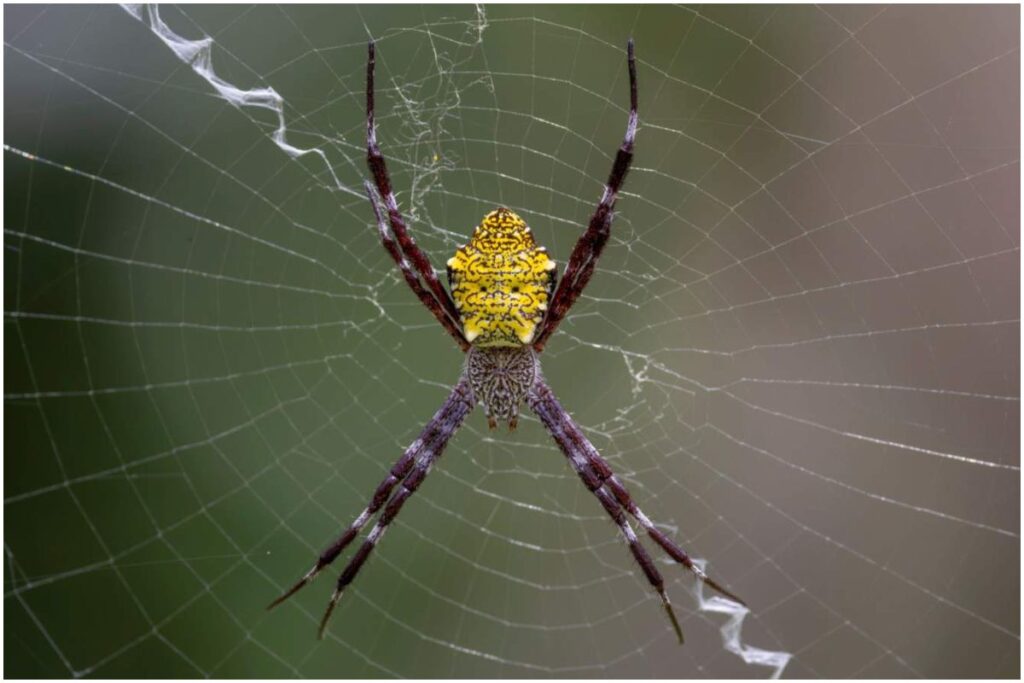
Despite the name, the Hawaiian Garden can be found in this Indonesian island as well. With its black and yellow body and long legs, it’s often mistaken for a dangerous species, but don’t worry, it is harmless at all.
They build stunning orb-shaped webs and spend their time catching insects, not bothering people. You’re most likely to see them in quiet gardens or villa surroundings.
These species can multiply during Bali’s spider season due to the humid climate, but they remain non-aggressive and beneficial to the ecosystem.
Final Thoughts About Bali Spiders
While eight-legged creatures may look scary at first glance, most are harmless and even helpful, not a problem at all for locals. From shy house web weavers to grand orb weavers, they play a crucial role in maintaining the island’s natural balance, so don’t panic if you spot one during the Bali spider season.
For a stylish and safe stay, Ini Vie Hospitality is a top-tier hospitality management in Bali, making your experience relaxing and enjoyable, even if Bali spiders are everywhere.
